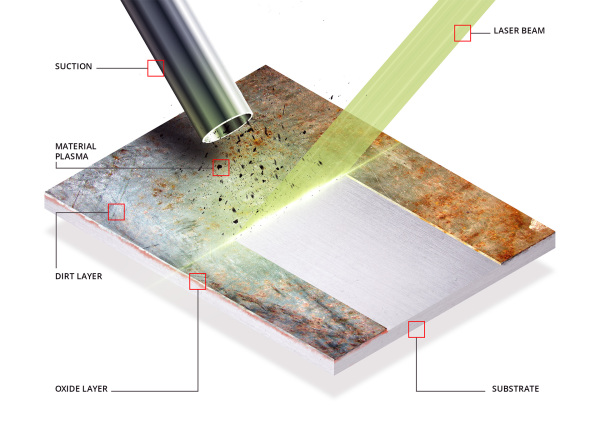HOW DOES LASER CLEANING WORK?
HOW DOES LASER CLEANING WORK?
LASER CLEANING EXPLAINED IN 7 STEPS
- The laser shoots bullets of infrared light energy to the surface
- The contamination absorbs/reflects the light's energy
- The contamination heats up very quickly
- The substrate remains cool
- The difference in temparatures causes the contamination to 'shrink off' the surface
- The dirt can be vacuumed off
- Result: a clean surface that has not been damaged!
HOW LASER CLEANING WORKS
We shoot exteme short energy (infra red) pulses to a surface Depending on the surface state and type a certain amount of energy is absorbed and converted into thermal energy.This energy can be used to evaporate the surface contaminant in dust and gasses. In between the pulses the surface can cool down and the cleaning can be controlled. The puls energy is delivered in 100x1000x1000000 of a second delay time. Being so short the base material has no time to transmit the energy into the material.
By manipulating the laser fluence, its wavelength and its pulse length, the amount of material that is being removed by a single laser pulse can be controlled with extreme precision. Making laser cleaning equally suitable for rapid and deep rust removal as for removing only one thin layer of paint, without damaging the base coat.
INTERESTED IN LASER CLEANING?
Interested in what laser cleaning can do for you? P-Laser performs tests on a daily basis. Book a demo or test to see what laser technology can mean for your company.

